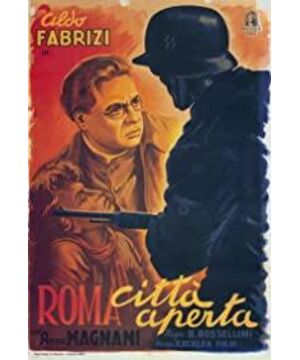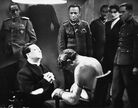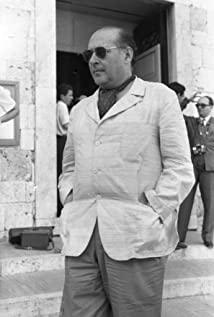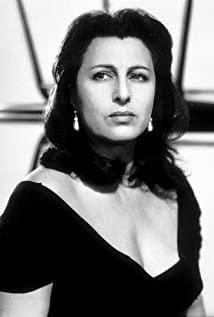"Rome, Undefended City" is widely regarded as the pioneering work of Italian neorealism. Its advent marks the birth of an important genre in film history, and also means the birth of a new film concept and a new way of film creation.
When director Roberto Rossellini filmed "Rome, Undefended City", despite the clear end of World War II, the German fascists still occupied the Italian capital, the Nazi secret police were rampant everywhere, and the Italian state was in a dire situation. difficulty. Infected by the strong anti-fascist sentiment of the Italian people, the director took up the camera and took to the streets. The film's success is due to the resistance movement. The film chronicles the life of the Romans living in the so-called undefended city during the last winter of the war. There is a real life basis behind each story: the prototype of Manfadi, who was betrayed by the dancer and tortured in prison, was one of the leaders of the Roman underground activities at that time, a communist member who had participated in the Spanish International Brigade Roubini. Don Pietro is based on Father Morrigini, who was shot by the fascists in the winter of 1944. Pinna can be said to be a true collective image of the Roman inhabitants.
The film can be regarded as a real documentary document organized according to the laws of tragedy. The degree of realism seems to make people feel that Rossellini did not deliberately express his subjective attitude, he just shot it with a camera from the standpoint of a bystander. down what he saw. Whether the film narrates the act of revolution or mutiny, the unity of the people or the inferiority of its opposite, or the gray Rome, the pale and humiliated city under the camera, they all constitute an exciting reflection of social systems, people's lives and historical events. screen. The epic status of "Rome, Undefended City" in neorealist cinema is irreplaceable.
The historical task of Neorealism was to liberate Italian cinema from the myth of Mussolini and bring it back to the people. Films under the control of Mussolini's fascist regime have long used lies to whitewash reality, and the screen is full of "white telephone films", that is, films deliberately show off the white telephones used by wealthy families to create the illusion of economic prosperity. Italy came out of the war with bruises and wounds, and the people longed for a new life and a just solution to the many social and economic problems they faced. The most important aesthetic feature of the neorealist films produced in this period is the desire for truth. Neorealist artists went out of the studio and moved their cameras to city streets and country dirt roads. They let unemployed workers, peasants who lost their land, soldiers returning to their shattered homes from the front lines, guerrillas with guns for justice, young girls who sold their bodies to Yankees to avoid starvation, and little boys who polished their shoes to feed them Wait for these most ordinary people to become the protagonists of their own films. The protagonist is played by non-professional actors, and the story of life itself is the plot of the film.
The term "neorealism" is used in cinema, and first appeared in an essay by Italian film critic Petrangiri in his review of Lucino Visconti's film The Sinking (1942). But there are no traces of fascist rule, nor the political and historical markers of that period, in this film about human nature. It is very different in its aesthetic nature from other cinematic works known as neorealism. Zavatini, known as the founder of neorealist film theory, put forward the neorealist program after summarizing some excellent films during that period. The reason why "Rome, Undefended City" became the first neorealist film is that it not only truly reflected the life and struggle of the Italian people at that time, but also fully conformed to the requirements of neorealist works in terms of creative methods and aesthetic pursuits. Defining principles.
The masters of neorealism all have unrepeatable personalities, and their works are also colorful. In the mid-1950s, countries all over the world, including China, had released a large number of neorealist films. Suffering Couple, No Peace Under the Olive Tree, Tragic Pursuit, Hard Rice, The Wolf and the Sheep, Miracle of Milan, The Earth Fluctuates, The Roof, etc. The difference between these works is not the difference in the source material, but above all the difference in the position of the author. The aesthetic and social program of Neorealism was most fully expressed by the director Vittorio de Sica and his collaborator and film theorist Cecily Zavatini. De Sica was an actor and began to be a director in 1940. He has participated in more than 150 films and directed more than 30 films. He directed neorealist classic films such as "Shoe Shine Boy", "Bicycle Thief", "Miracle of Milan", "Umberto D", "The Roof", "The Woman of Jocharia", etc. . He was one of the filmmakers who began to explore the path of neorealism as early as the era of fascist control. In 1943, De Sica filmed the daily life drama "Children are watching us". Together with Brasetti's Quartet in the Clouds (1943) and Visconti's The Fall (1942), it is considered a precursor to Neorealism. French film critic Andre Bazin once wrote: "Rossellini's style is above all his ideas, and De Sica's is above all emotion." Two genres in realist Italian cinema.
Commentators have also historically disagreed about the two branches of Neorealism. In addition to the views represented by Bazin, there are also critics who believe that Neorealism can be divided into two factions or two main tendencies. One is represented by Rossellini and Visconti, and is mainly characterized by being good at philosophical thinking and showing a broad social picture; the other is De Sica, De Santis, Termi, Ke Represented by Mancini, Lisani and others, they mainly express the process of history through the fate of individuals, by analyzing the spiritual world of ordinary people and their conflicts with the aging society. The latter category of directors had seen many Soviet films during their studies at the Wartime Roman Film Experiment Center, and it can be said that Soviet films and Pudovkin's aesthetics had a great influence on them.
There has also been historical debate over when the Neorealist movement began and ended, generally believed to have begun in 1945 and ended in 1950. However, some commentators believe that the period from "The Sinking" in 1942 to 1944 should be the budding period of new realism, and it began to decline in the 1950s. However, some masters of neorealist films still produced some excellent works of neorealism in the 1950s, such as De Santis' "11 o'clock in Rome" (1952), De Sica's "Umberto D" (1952) and "The Roof" (1956). In this way, the Neorealist movement has experienced a total of 14 years.
It should be seen that the authors of Neorealism carried out a profound critique of Italian reality. They all angrily and mercilessly exposed the various evils presented by society, but they did not address how to solve these social problems and how to improve people's lives. This tendency, which can be seen as the main characteristic and limitation of the works of the Neorealists.
From the late 1950s to the early 1960s, three talented directors of Fellini, Antonioni and Pasolini appeared in the Italian film circle, and their works occupied the main position of Italian cinema. The Italian neorealist film produced by the resistance movement has become history, but the film concept and creation method it provides have had an inestimable influence on the film creation of Western countries after that. Afterwards, André Bazin, who became the leader of the French New Wave, started his career in research and promotion of Neorealism. Hollywood movies fell into a trough for reasons such as avoiding the dark side of society, and at the same time, they were changed by the impact of new realism, which led to the emergence of "New Hollywood". In the history of world cinema, the aesthetic essence of Italian neorealism is obviously one of the topics worthy of serious study.
View more about Rome, Open City reviews










